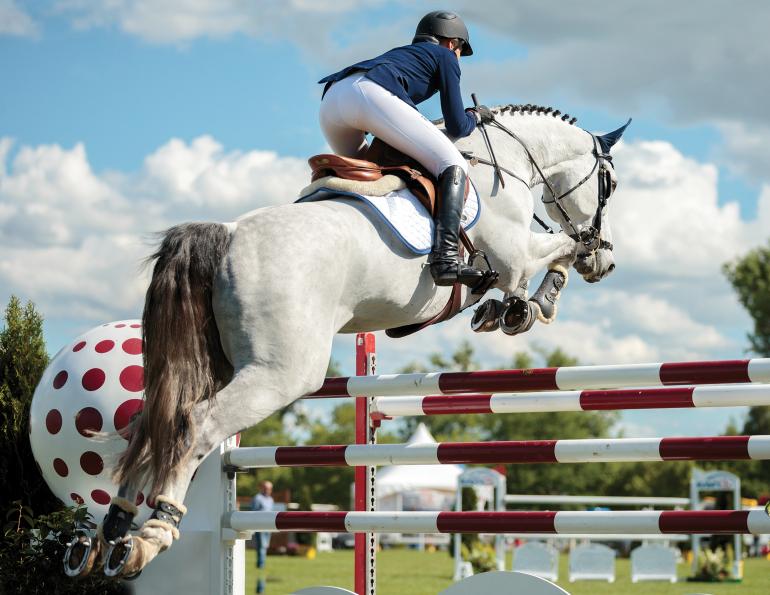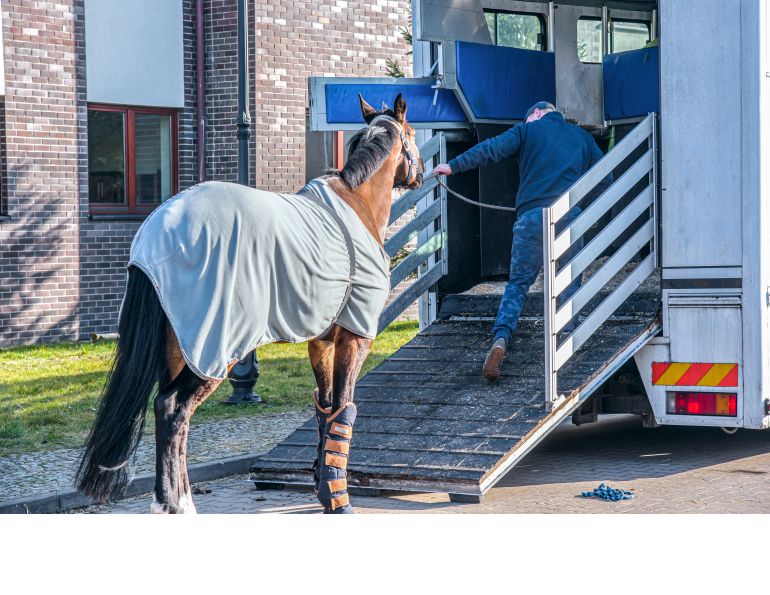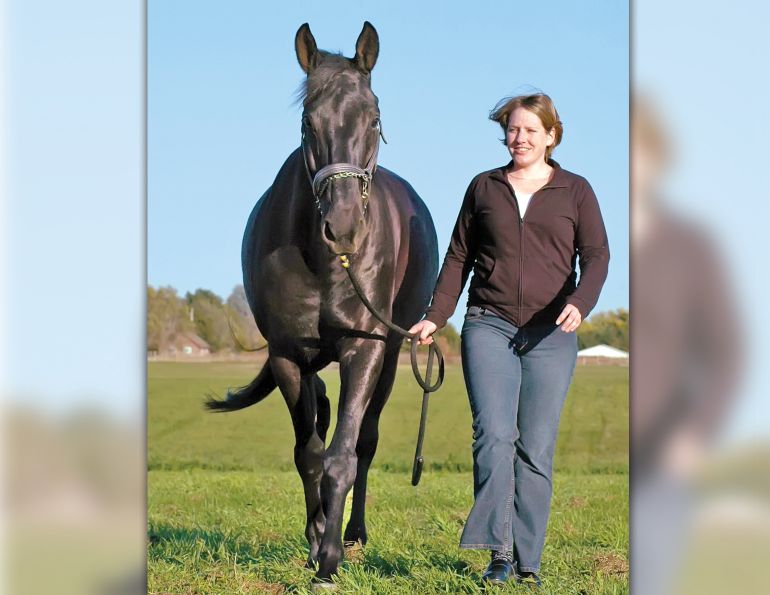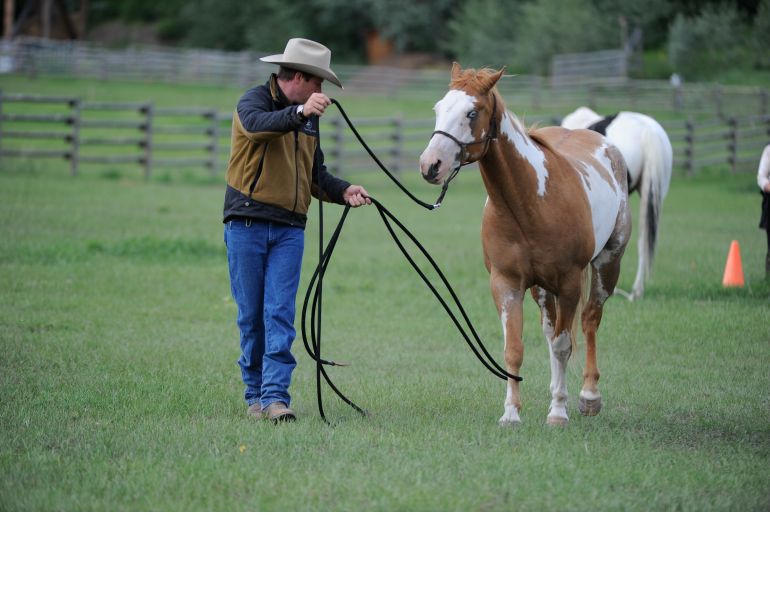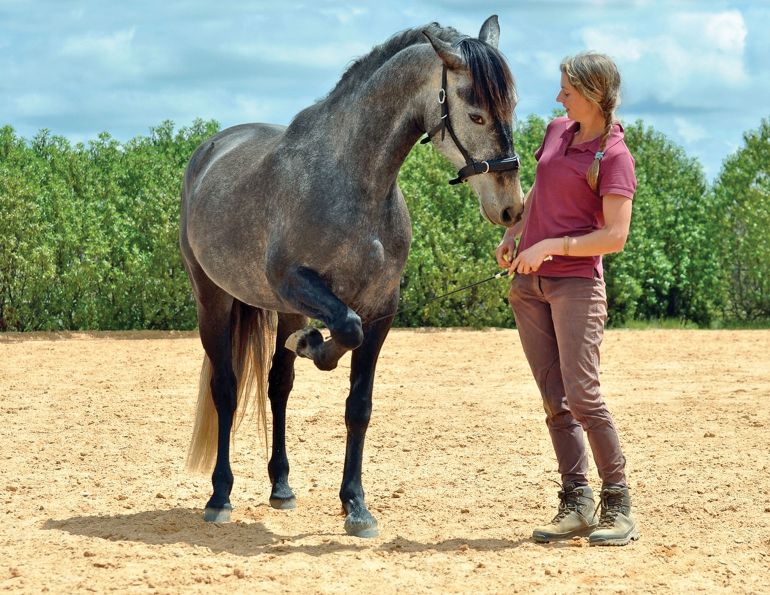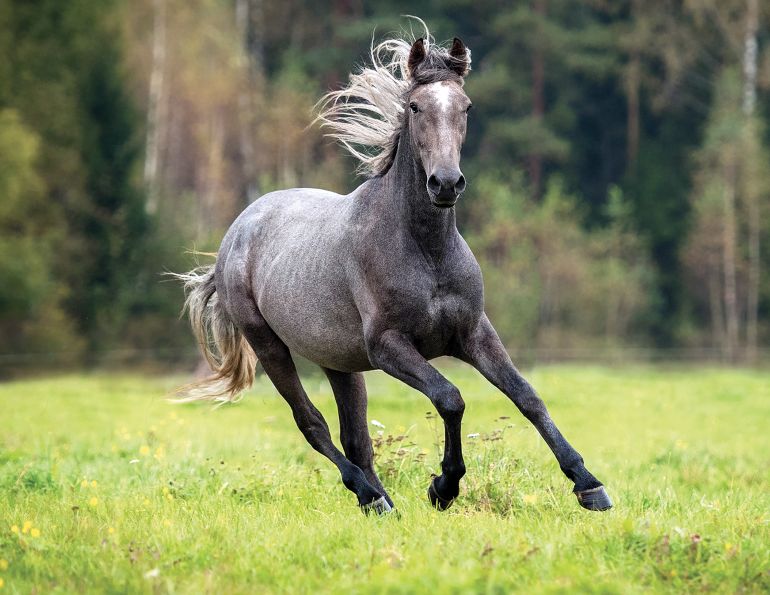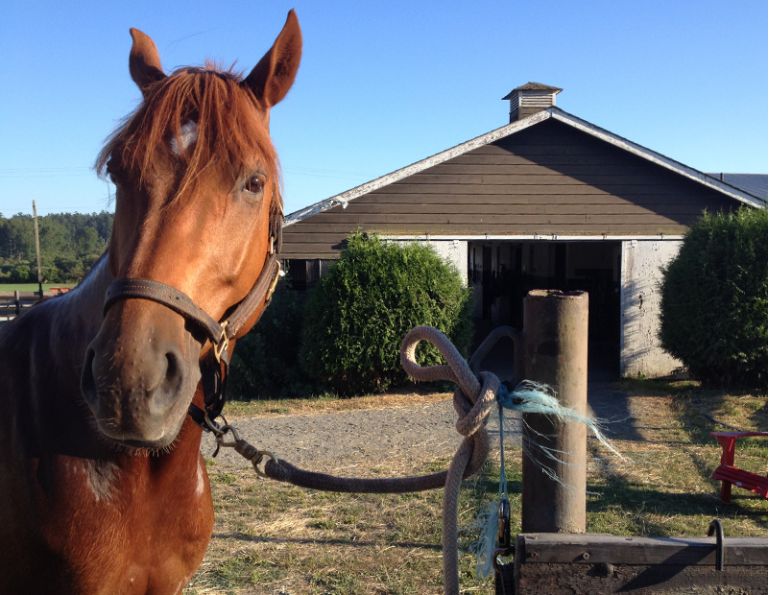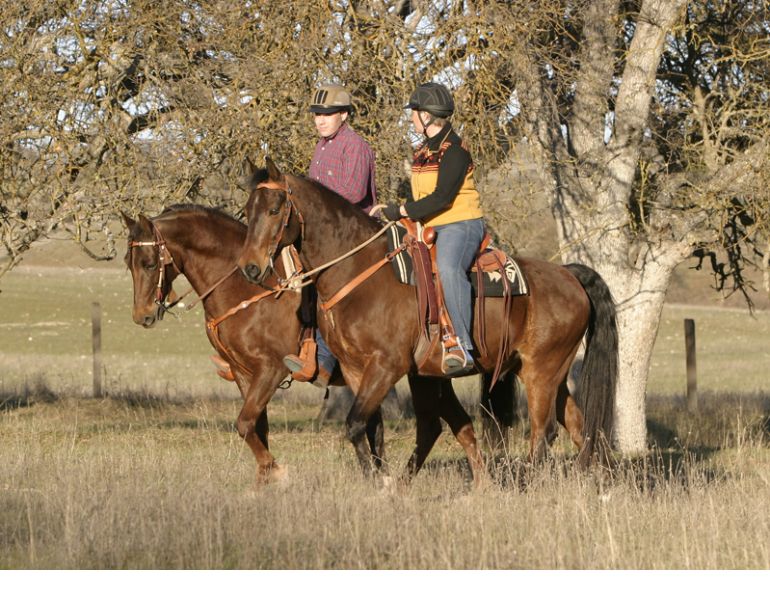By Lindsay Grice, Equestrian Canada coach and judge
Q: My horse won’t stand still while I mount. Every time I climb up on the mounting block, she moves her hindquarters away. Then, as soon as I get my left foot in the stirrup, she starts walking forward. How do I teach my horse to stand still when I’m mounting?
A: Perhaps because it doesn’t affect one’s mark on the judge’s score card or change a barrel run time, many riders don’t put a lot of thought into teaching their horse to stand still at the mounting block – that is, until it starts to become a bigger problem. Before you find yourself doing a “Butch Cassidy mount-on-the-fly,” spend some time setting boundaries with your horse.
Be considerate of your horse when mounting. Turn your toe slightly forward when mounting to avoid jabbing her in the side, and settle yourself down in the saddle lightly. Photo: Jess Hallas-Kilcoyne
In everything you do with your horse, including mounting, you are in the leadership role, and that role requires that you have a plan and set boundaries accordingly.
Here are five tips for training your horse to stand…
1. Envision a box around your horse
Imagine a box around your horse and put pressure on the horse every time she steps forward, backward, or sideways out of the box. Reward her by releasing the pressure when she stands still, so that she learns to find freedom within the confines of the box. This type of training, removing something that the horse dislikes (pressure) in order to reinforce a desired behavior (standing still) is what’s known as negative reinforcement.
When your horse slows her canter in response to your resisting hands and you soften the reins...when she accelerates in response to pressure from your leg and you drop your heels...when she steps forward into the trailer at your pull on the lead shank and you relax the lead, in all these scenarios, you’re rewarding by negative reinforcement. By giving the horse relief or escape when she makes the correct choice, you’re ensuring that she’s more likely to make that choice again.
Timing is crucial. Whatever your horse is doing when you release the pressure, she’ll likely do again. When a rider interrupts the pressure to adjust rein length, reposition her leg, or scratch her head, she gives her horse an untimely reward.
2. Keep your reins short, but not tight
You should be able to stop any unauthorized steps forward with your left hand. If your reins are loopy, one step will turn into three steps before you can gather up the slack. On the other hand, if your reins are too taut, the horse will step out the back door of your imaginary box. Often when mounting, a rider’s concentration is focused on fitting their foot into the stirrup, rather than keeping their rein hand in place. Independent use of the hands and legs is an important key to good communication with your horse.
Teach your horse to move sideways away from a tap of the whip so that you can easily reposition her at the mounting block if necessary. Photo: Jess Hallas-Kilcoyne
3. Use the whip as a tool
Many riders teach their horses to swing their hindquarters to the left (closer to the mounting block) in response to little taps of the dressage whip on the horse’s right hip. Begin teaching your horse to yield to the whip away from the mounting block using quick, light taps anywhere on her body. The taps should be irritating to the horse, not frightening. Once she moves that body part away from the pressure of the whip, immediately reward her by ceasing the tapping. Keep in mind that your goal is to have the horse move sideways. Your horse is likely to offer forward and backward steps in a “trial and error” attempt to escape the irritation, but keep tapping until she finds the correct answer and steps sideways, then reward her.
4. Be considerate
The horse will be understandably annoyed and try to leave if the rider drags a foot across her rump, sticks a toe in her side, or lands heavily in the saddle with a crash. Try to be graceful.
5. Budget time to practice
Build time for mounting training in each riding session. It’ll be worth the investment.
To read more by Lindsay Grice on this site, click here.
Main photo: If your horse has swung her hindquarters away from the mounting block, do not put yourself in a potentially dangerous situation by attempting to mount anyway. Credit: Jess Hallas-Kilcoyne



